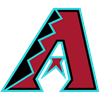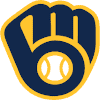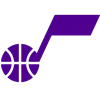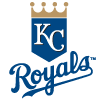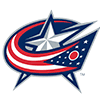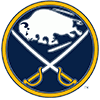While fantasy football and Ronald Acuna are getting most of fantasy owners' attention right now, there are several hitters and pitchers that have got off to hot starts in the second half. We'll look at a handful of those and attempt to determine whether the hot streak is real and most importantly, sustainable.
Note: listed stats are second half stats through games of Tuesday, August 15.
Rougned Odor (2B-TEX)
.347/.425/.694, 11.5 BB percentage
Walks per game (2015-2017): 0.15
Walks per game (2018): 0.36
Odor had a game to remember on August 2, going one for one with a home run and five walks. There are many months in his career in which he fell short of drawing five walks, and as an Odor owner myself, I'm loving the newfound plate discipline. In his last 30 games, Odor has a .423 OBP. This from a guy with a .252 OBP last year and a .297 career mark. We'll see if this continues, but right now, Odor is the brightest spot on a team that's going nowhere anytime soon. He's probably not going to post his third straight 30-plus homer season, but the way he's going lately, he could reach 25 and wind up hitting in the .280/.360/.490 range. I'm not sure whether Odor is consciously going up to the plate trying to be more selective, but whatever he's adjusted, it's working. Who knows whether this will continue, but we've seen enough of a sample size for me to be comfortable that
While fantasy football and Ronald Acuna are getting most of fantasy owners' attention right now, there are several hitters and pitchers that have got off to hot starts in the second half. We'll look at a handful of those and attempt to determine whether the hot streak is real and most importantly, sustainable.
Note: listed stats are second half stats through games of Tuesday, August 15.
Rougned Odor (2B-TEX)
.347/.425/.694, 11.5 BB percentage
Walks per game (2015-2017): 0.15
Walks per game (2018): 0.36
Odor had a game to remember on August 2, going one for one with a home run and five walks. There are many months in his career in which he fell short of drawing five walks, and as an Odor owner myself, I'm loving the newfound plate discipline. In his last 30 games, Odor has a .423 OBP. This from a guy with a .252 OBP last year and a .297 career mark. We'll see if this continues, but right now, Odor is the brightest spot on a team that's going nowhere anytime soon. He's probably not going to post his third straight 30-plus homer season, but the way he's going lately, he could reach 25 and wind up hitting in the .280/.360/.490 range. I'm not sure whether Odor is consciously going up to the plate trying to be more selective, but whatever he's adjusted, it's working. Who knows whether this will continue, but we've seen enough of a sample size for me to be comfortable that this this newfound plate discipline could be mostly sustainable.
Kole Calhoun (OF-LAA)
.318/.413/.659
Through May 31, Calhoun wasn't exactly a fan favorite, as Angels fans were calling for his release or at least his demotion to Triple-A. At that time, Calhoun was batting a pitcher-like .145/.195/.179. That's a .374 ISO, which is obviously abysmal. Calhoun then went on the DL with an oblique strain (we think it was a real injury). He then returned on June 18, and since then, the Angels OF has hit .297/.369/.634 with 15 home runs in just 198 plate appearances. Maybe he spent his entire DL stint watching past tape of when he was a good hitter. Whatever it was, Calhoun has been one of the hotter hitters in the league the past two months. He dug himself such a hole that he's still hitting a modest .220/.285/.406, but if you bought low – or, more likely, plucked him off the waiver wire when he came off the DL – and got a few hits, congratulations. No reason at this point to think he won't have a strong finish to 2018.
Marcus Semien (SS-OAK)
.315/.396/.494
Semien has hit 27 home runs in a season already (2016) and he's swiped 10-plus bases in each of the past four seasons, including 2018, so he's certainly fantasy-relevant. Problem is, however, he's a .250/.311/.405 career hitter with so-so ratios, including an 8 BB percentage and 22 K percentage. Semien also would seem to be in line to face competition from young players such as Franklin Barreto and Jorge Mateo at some point, but then again, neither of them has impressed much this year. Semien may also find himself on the trade block this winter, as he's eligible for arbitration after making $3.125 million this year, a number that could rise to more than $5 million in 2019 before he becomes a free agent after the 2020 season. Maybe Semien's plate discipline is developing considering he has a solid 20:14 K:BB in his last 30 games, and he's in his age-27 season, which some seem to think is a magical number. I just look at the career slash line and remain somewhat pessimistic, but who knows, maybe he has really made some progress.
Mallex Smith (OF-TB)
.329/.442/.500
I find it tough to roster a guy with six career home runs in 261 games, but Smith also has 25 steals in 108 games this year, and is playing regularly and playing quite well. With his speed and a .369 OBP, the list of leadoff hitters than have been more effective than Smith this year is a small one. Could we have seen this coming? Well we know that Smith has always had speed, having swiped as many as 88 (!) bases in a single minor league season while posting OBPs that routinely hit or exceeded .400, but OBPs of .316 and .329 were his MLB totals the past two seasons. This year however, considering he's still just 25, I'm not too surprised to see him take a step forward. I'm pretty much buying his breakout given his youth and minor league track record.
Joey Gallo (OF-TEX)
.253/.372/.633
It's not exactly surprising to see Gallo sporting an elite (very elite) .380 ISO, but what is surprising is the .253 batting average. The hot streak took Gallo's overall line to .200/.312/.481 and he's now a career .201 hitter. Obviously, Gallo has far more value in OBP leagues considering he has a crazy-high 38 K percentage, and though he's never going to hit for much of an average unless he drastically changes his approach, which seems unlikely. It would not be surprising to see Gallo hit 60 home runs in a season, but will that come with a .190 BA or a .250? Gallo is still just 24, so developing some plate discipline in the near future wouldn't be unprecedented.
Nick Ahmed (SS-ARI)
.295/.349/.551
At times in his career, Ahmed has seemed destined for a utility role and that could still happen for the 28-year-old, but he's playing every day right now. Ahmed is hitting a modest .243/.299/.455 overall, but he's obliterated his previous career high with 16 home runs and he's off to a nice start to his second half. Ahmed looks to be locked in as the everyday shortstop with Eduardo Escobar at third, Ketel Marte at second and Daniel Descalso rotating among several positions. Ahmed has no real history as a top prospect, and though he once swiped 40 bases in a season, that was six years ago, and he has just four this year. It seems like there would be more attractive options in 12-team mixed leagues, but in NL-only and deeper league formats, Ahmed's power gives him a lot of value, and he should continue to play most every day.
Zack Godley (SP-ARI)
2.84 ERA, 3.08 xFIP, 10.0 K/9, 2.3 BB/9
A nice surprise last year (3.37 ERA, 165:53 K:BB in 155 innings), Godley got off to a slow start this year with a 4.61 ERA in the first half, though he did fan 108 in 105.1 innings. Problem was though, he also posted a 4.5 BB/9 while allowing 12 homers. In five starts since the break, Godley hasn't allowed a homer in 31.2 innings while posting a solid 35:8 K:BB, but I'm a bit skeptical for a few reasons:
- 1. Fastball velocity is down 1.9 mph over last year to 90.0 mph.
2. Groundball rate is down from 55.2 to 50.4%.
3. His cutter grades out as far less effective this year after it was a plus offering in 2017.
4. Swinging strike rate is down from 13.3 to 11.8%.
David Price (SP-BOS)
1.03 ERA, 3.44 xFIP, 8.5 K/9, 1.7 BB/9
Price's five second-half starts have all been of the QS variety, as he continues to bounce back from a variety of injuries last year that limited him to 74.2 innings. He's not going to hit 200 innings this year, but 30 starts of sub-4.00 ERA pitching must have the Red Sox mostly satisfied with his season. On the concerning side is that Price's fastball velocity has dropped 1.6 mph compared to last year and now sits at 92.7 mph. He's also seen his control regress a bit the last couple years, as his career BB/9 sits at 2.0 while he's posted marks of 2.9 last year and 2.6 so far in 2018. It's probably also worth noting that since 2010, only six pitchers have tallied more than Price's 1,728.2 innings. Justin Verlander and Max Scherzer are No. 1 and No. 2 and they are fine, but the others? Clayton Kershaw (recurring back issues), James Shields (terrible), Jon Lester (hasn't been the same the past two seasons), and Cole Hamels (liking the NL, but jury is still out). Those innings seem to catch up with guys as they get into the 32 to 34 range (Felix Hernandez), and that could happen at any point with Price, though obviously he's been fine lately. I'm just still wary.
Dereck Rodriguez (SP-SF)
1.35 ERA, 3.63 xFIP, 7.6 K/9, 1.6 BB/9
Rodriguez has been a huge surprise, and, considering all the injuries the Giants have had to their pitching staff, he's been arguably the team's most valuable player to date. With a 2.25 ERA over 80 innings, Rodriguez has gone from a guy who didn't even clear Class-A minor league ball until he was 25 last year to a pitcher who will likely be a top-five NL ROY finisher. It's just tough to see this being sustainable for a few reasons:
- 1. Prior lack of attention from the scouting community.
2. A so-so overall 7.3 K/9.
3. A 91.7 mph average fastball.
4. A 2.25 ERA vs. a 3.13 FIP.
Nick Pivetta (SP-PHI)
3.68 ERA, 2.47 xFIP, 12.3 K/9, 1.2 BB/9
Pivetta has had an up-and-down season, posting five starts in which he allowed five or more runs, while being brilliant in several others, including games of 11, 12 and 13 strikeouts. Pivetta overall has a so-so 4.37 ERA, but with elite ratios, including an 11.0 K/9 and 2.4 BB/9. If he can gain some level of consistency, I see No. 2 starter ability, particularly given his 3.53 FIP. Pivetta can get bitten by the HR bug too often, but he's reeled off three consecutive quality starts this month, including holding the Red Sox to one run in six innings last time out. Pivetta averages 94.8 mph with his fastball, but he's struggled versus southpaws, allowing a .313 average against him this year. That same mark was just .220 a year ago, so his L/R splits have pretty much flip-flopped the last two years.
| SPLIT | 2017 | 2018 |
| vs. LH hitters | .253 | .313 |
| vs. RH hitters | .308 | .220 |
It's pretty unusual to see this sort of year-over-year change. Perhaps Pivetta and the coaching staff can go back and see what worked last year vs. LH hitters and figure some things out. I'm pretty optimistic on him going forward, as his 12.2 percent swinging strike rate currently ranks 18th among qualified starters, and his 12.8 percent mark in the second half is even better.
Jace Fry (RP-CHW)
5.63 ERA, 1.15 xFIP, 16.9 K/9, 2.3 BB/9
A 5.63 second-half ERA obviously isn't good, but most of the damage came in one outing on July 29 (0 IP, 3 ER). Fry has allowed two runs in 5.1 innings since then, including a nice 13:2 K:BB during that time frame. For the year, Fry has a 4.34 ERA, though his 2.32 xFIP indicates some potential bad luck in the past and good things going forward. Fry has posted some lofty strikeout totals in the minors in recent years, and he's really been missing bats lately as the 16.9 K/9 above indicates. Fry is doing this despite a fastball that averages a modest 92.7 mph, as his slider has been his money pitch, and even his curve and change grade as above average pitches. He's tough when he's locating well, though the occasional blowup indicates that when he's not doing so, results can be poor. With Joakim Soria now in Milwaukee, the closer job is wide open. Luis Avilan, Xavier Cedeno and Thyago Vieira are in the mix, with perhaps Cedeno the favorite for now. Fry, however, is a guy worth monitoring given he's relatively young (25) and could be a key part of the team's next AL Central crown. It wouldn't be a huge surprise to see Fry lead the team in saves the rest of the way.








